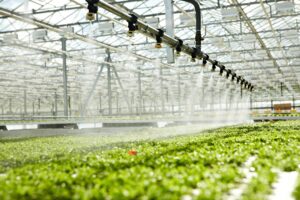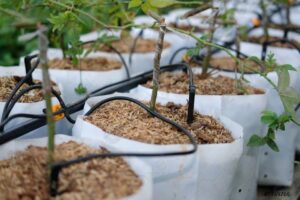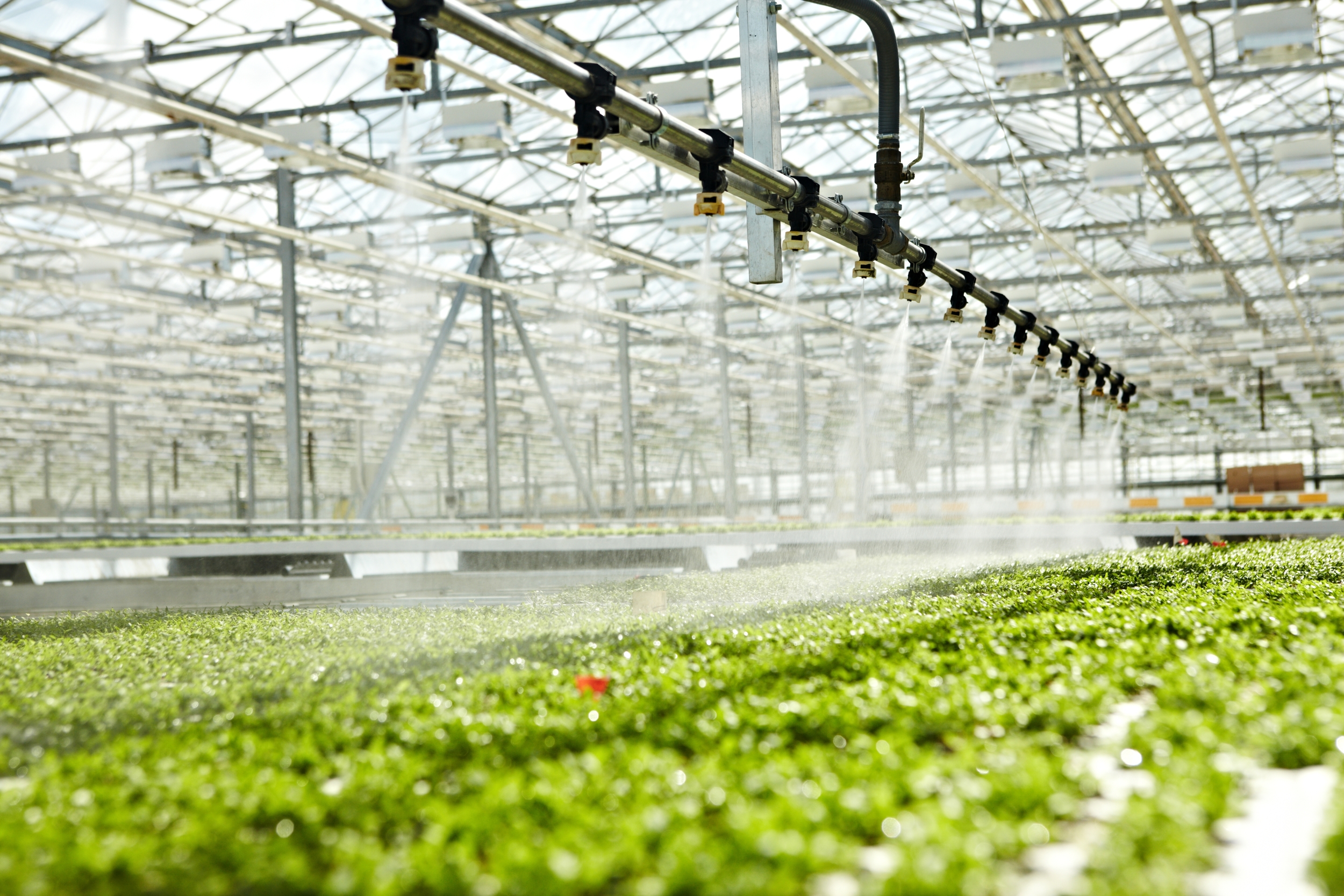Maintaining your water flow to the greenhouses need regular inspection and maintenance to the irrigation system. Before starting filter maintenance, make sure the system is not under pressure.
Inspection and Maintenance to Your Irrigation System
Filters
Periodic irrigation inspection of the medium in gravel/sand filters is an essential maintenance task that is frequently neglected. Gravel/sand should not be caking and cracking and should be adequately cleaned during the automatic back-flush cycles.

The filter might lose some gravel/sand during the back-flush cycles, so even if the filter is in proper working order, it may require additional gravel/sand from time to time.
During inspection examine the gravel/sand by touch. The gravel/sand grains should be sharp edged, not rounded smooth like beach sand. The sharp edges promote better filtration but backwash cycles will wear the gravel/sand smooth over time. If this has occurred, replace the gravel/sand. The rounding of gravel/sand edges may take a number of years, but it will eventually happen.
Screen filter
• Take the screen out of the filter casing and clean it with pressurized water and brushes.
• Visually inspect the screen for breaches and cracks and replace the screen if damaged.
Disc filter
- Open the filter’s casing and release the piston holding the discs pressed close together.
- Take the discs out of the filter casing.
- Thread the discs on an acid-resistant rope and tie the ends of the rope to form a loop. Do not thread too many discs on one loop; it is important that the cleaning solution reaches all the disc surfaces.
- Soak the discs in this solution,* making sure the discs are loose and have good contact on both sides with the solution. Do not put too many discs in at one time.
- If the disk remains dirty repeat the last step.
Solution for surface water with organic and biological residue:
Make a 10% peroxide solution. Pour 7 liters (1.8 gallons) of water into a container and add 3 liters (0.8 gallons) of hydrogen peroxide (35%) or pour 8 liters (2.1 gallons) of water into the container and add 2 liters (0.53 gallons) of hydrogen peroxide (50%) to the water.
Solution for well water with manganese, iron or carbonate deposits:
Make a 10% hydrochloric acid solution. Pour 7 liters (1.8 gallons) of water into a container and add 3 liters (0.8 gallons) hydrochloric acid (30-35%) to the water.
- Stir the discs in the solution a few times. Total soaking time should be 1 to 3 hours.
- If the solution is no longer cleaning the discs, replace it with a new mixture.
- Visually inspect the discs for cleanliness and for dents and cracks and replace any damaged discs.
- Rinse the discs with clean water.
- Put the discs back in the filter. Make sure to put back the same number of discs that have been taken out.
- Tighten the piston holding the discs pressed close together and close the filter casing.
- Flush the filter a few times to remove all chemicals.
Flushing the main, sub-main and distribution lines
Flushing the main, sub-main and distribution irrigation lines is an important operation that often doesn’t get the attention it requires. Even with a primary filter at the head control station, small particles can get by and should be physically removed from the piping system.
Flushing the main, sub-main and distribution irrigation lines will considerably reduce the accumulation of organic and mineral materials in the system.
This will prevent those materials from reaching the drippers and eventually clogging them, thus minimizing the quantity of chemical products required to maintain the system. Regular flushing of the main, sub-main and distribution lines will result in a significant saving of labour time and chemicals.

The main, sub-main and distribution irrigation lines in the system should be flushed in sequence. Each one of them should be flushed for at least two minutes or until the flushed water runs clear.
The pipes must be flushed at regular intervals. The frequency depends mainly on the water quality and the maintenance program (minimum: once a growing season).
Flushing is effective only when the flow rate within the main, sub-main or distribution line is sufficient to allow for proper flushing velocities in the system.
Manual flushing of main, sub-main and distribution lines
Flushing may be automatic or manual.
Manual flushing of main, sub-main and distribution lines should be carried out as follows:
- Flush the pipes in this order: main line, sub-main lines, distribution lines.
- Open the flushing valves of each one of them in turn while under pressure.
The process of flushing the main, sub-main and distribution lines consists of two waves for each:
- The first wave removes contaminants collected at the end of the pipe.
- The second wave removes contaminants from the pipe.
- The color of the water is not as dark as in the first wave, but the process takes more time.
- Flushing must be continued until the water is visually clean.
Obtain the velocity of the water flowing in the pipes
The velocity of the water in a pipe depends on the flow rate and the internal diameter of the pipe.
Identify the diameter of each irrigation pipe section to be flushed separately using the table below, presenting the most common diameters of pipes used for main, sub-main and distribution lines then check the flow rate in each pipe section to be flushed separately with the closest water meter installed upstream from it.
Conclusion: Optimizing Greenhouse Irrigation
In conclusion, diligent maintenance of your greenhouse irrigation system, encompassing regular checks and cleaning of filters, and systematic flushing of main, sub-main, and distribution lines, is pivotal for ensuring optimal water flow. Remember, the health of your plants is directly tied to the effectiveness of your irrigation system. Take care of your water flow system and control unit – it will save you money and a lot of headaches! JS

